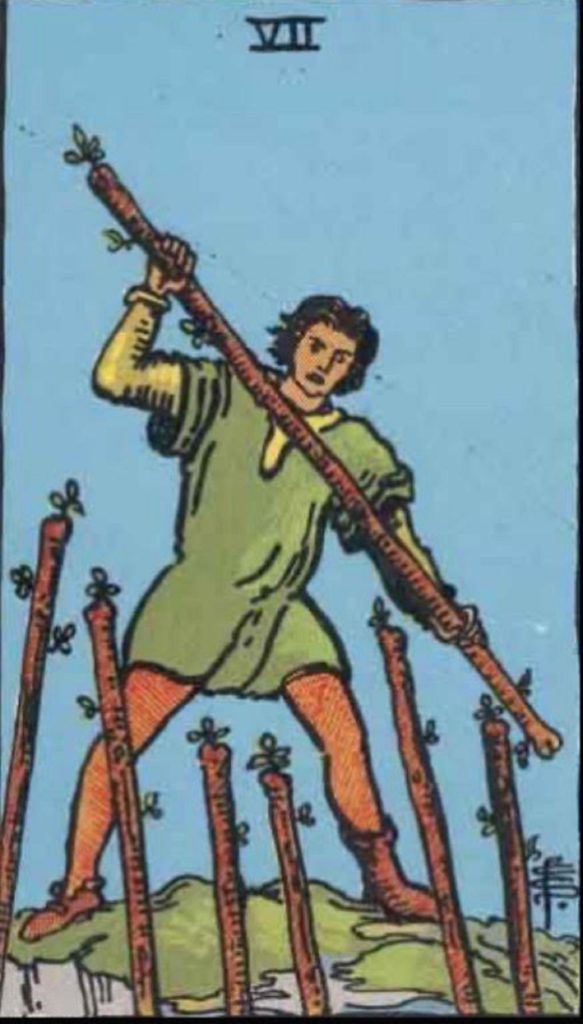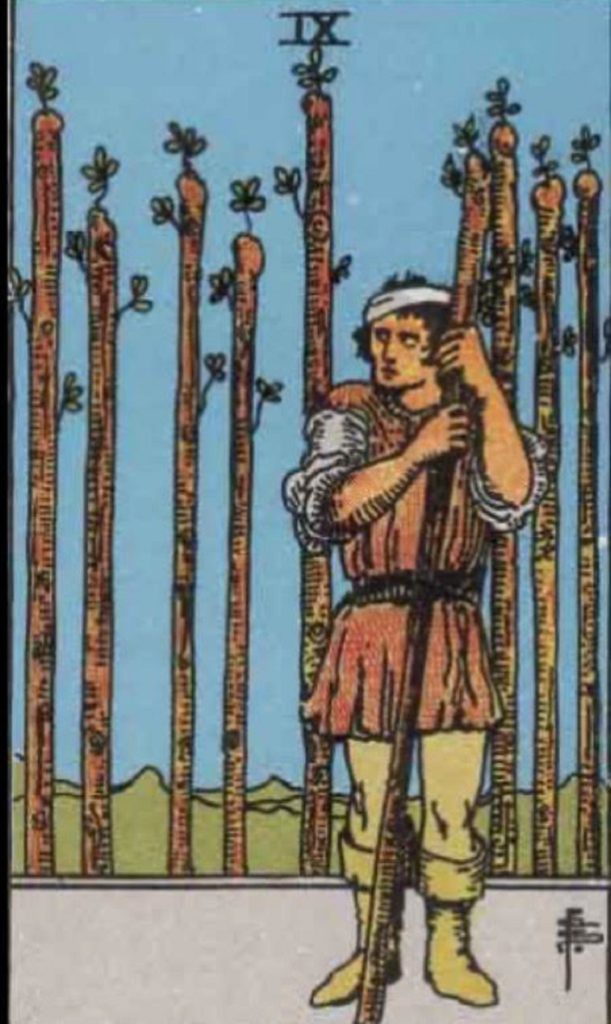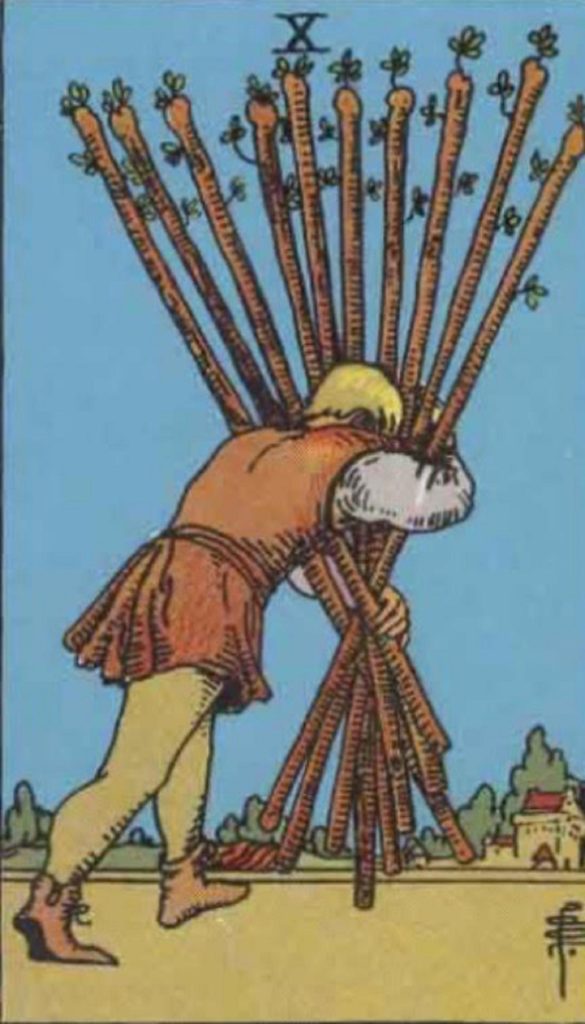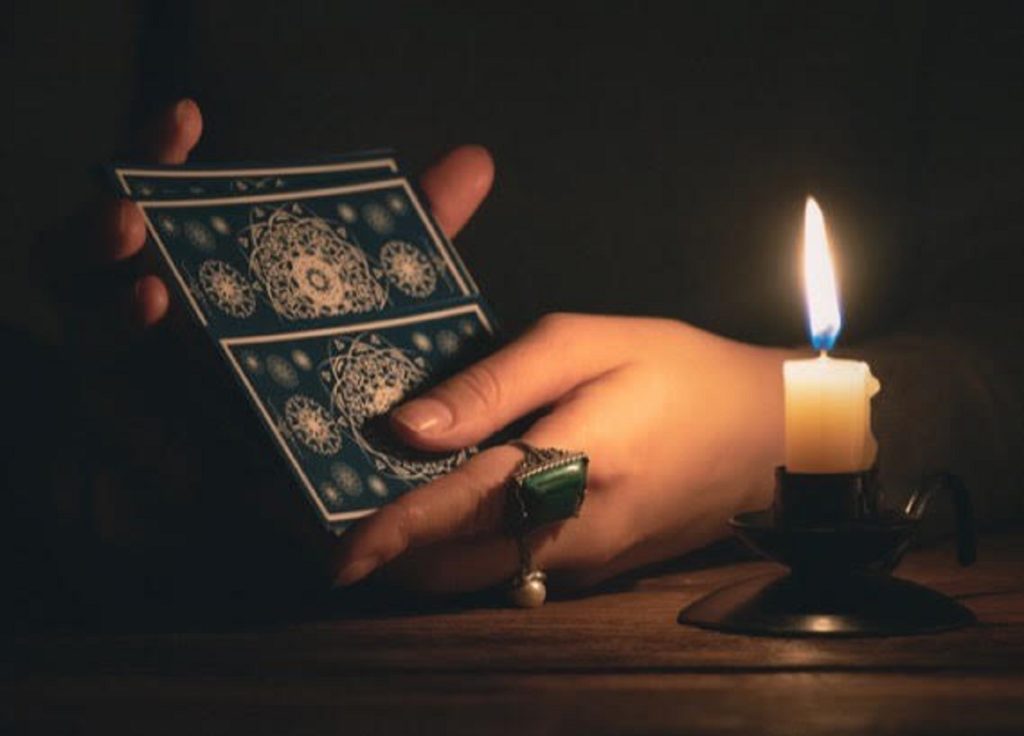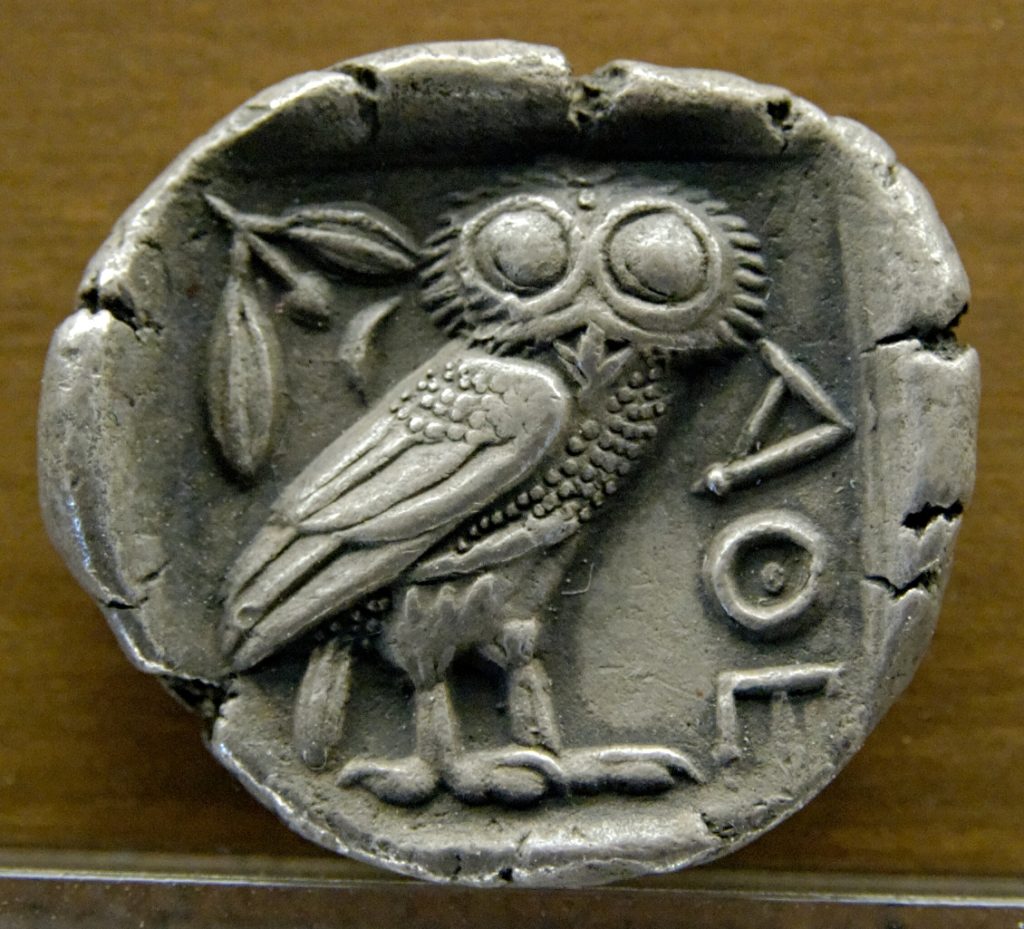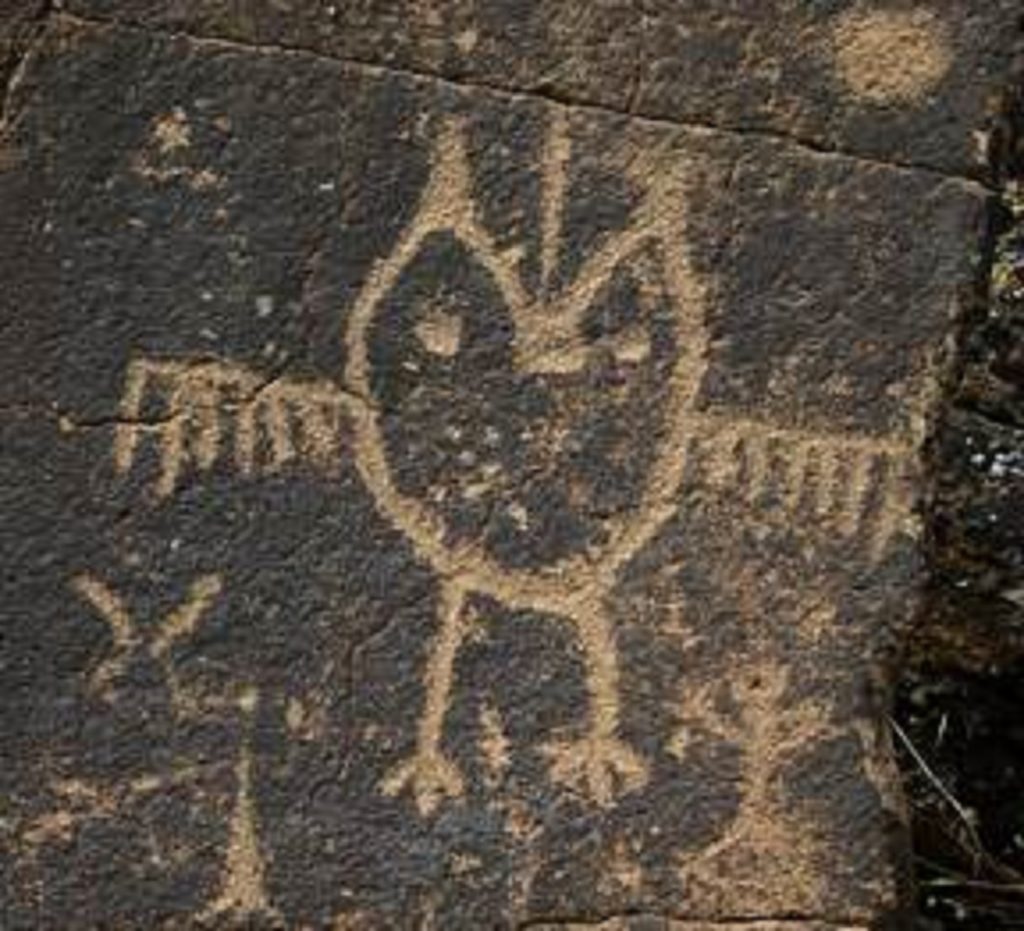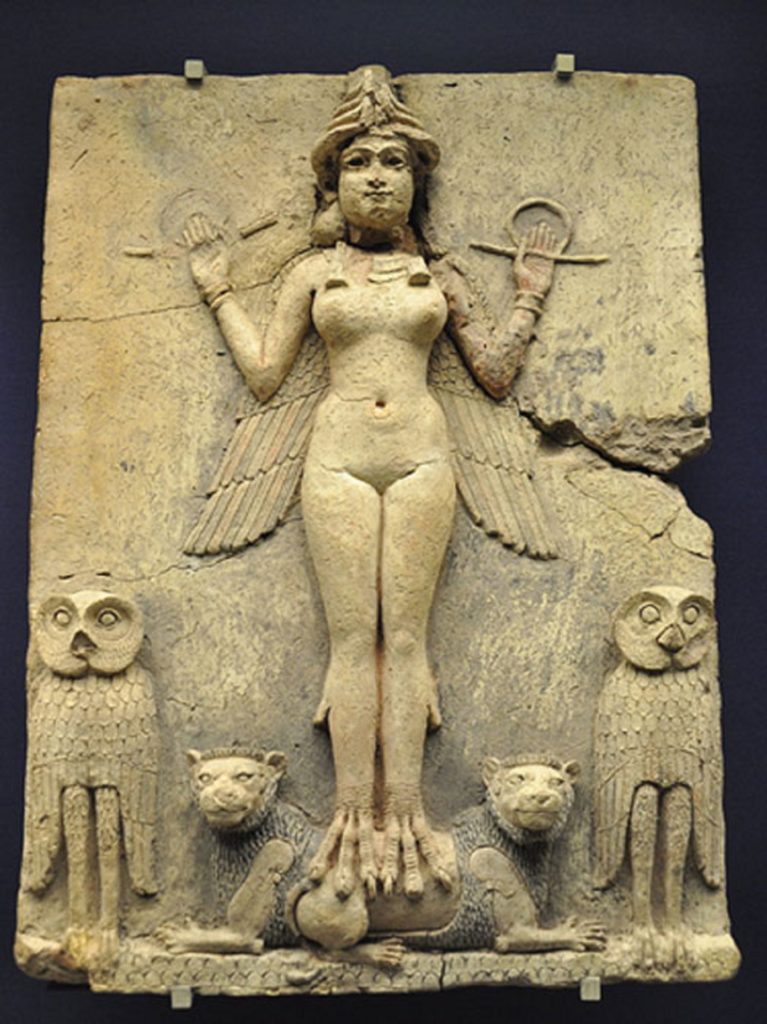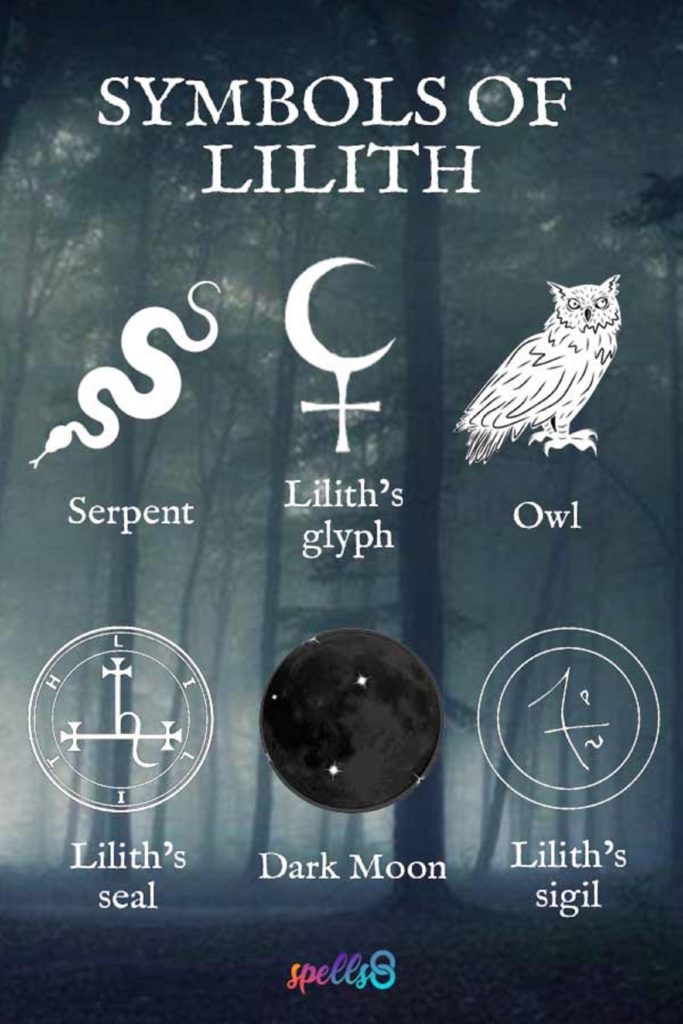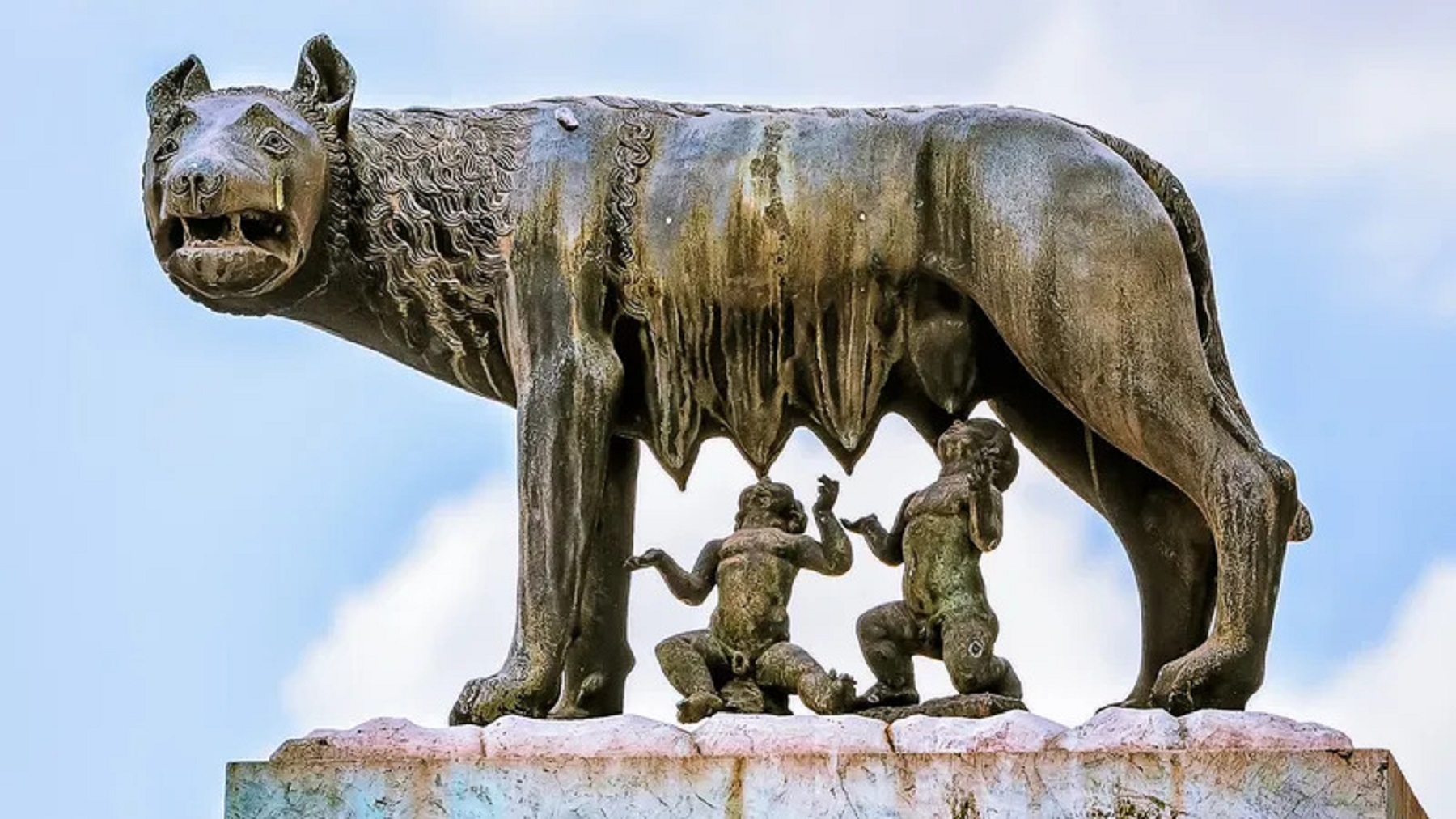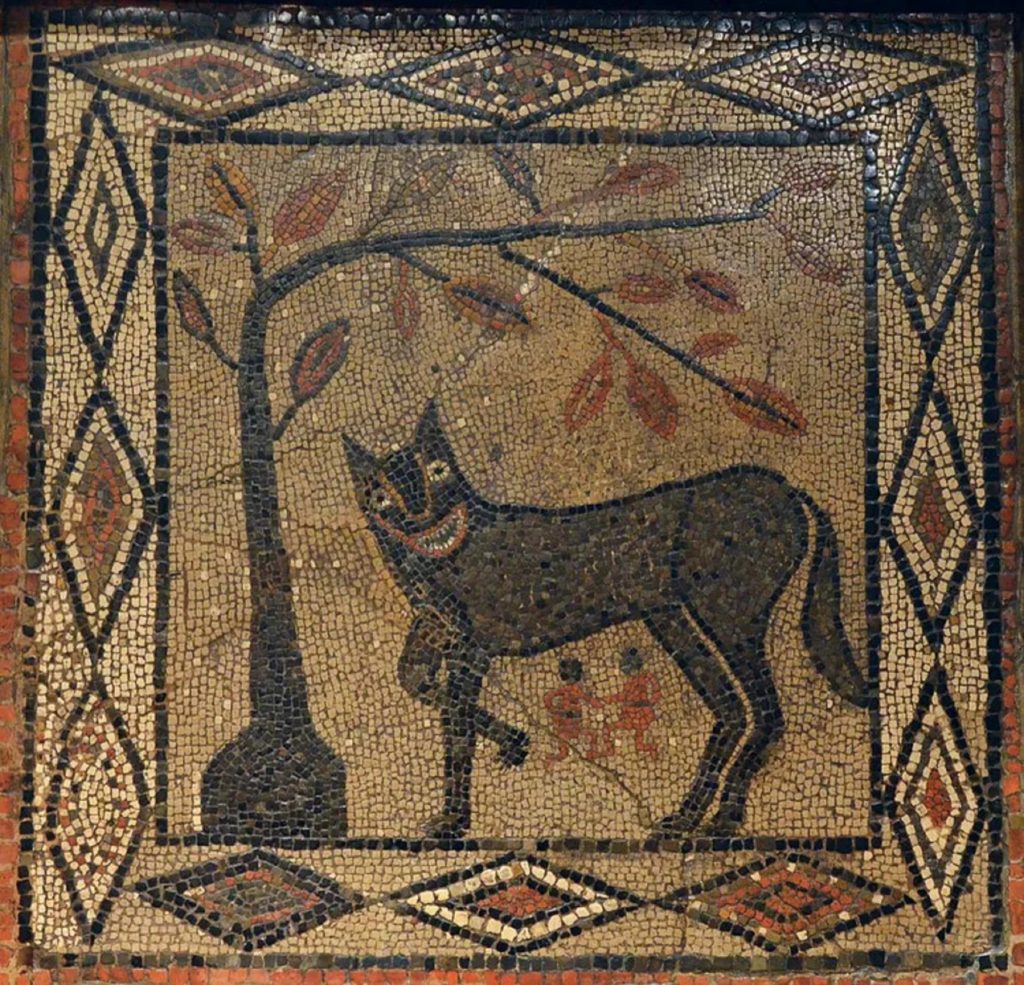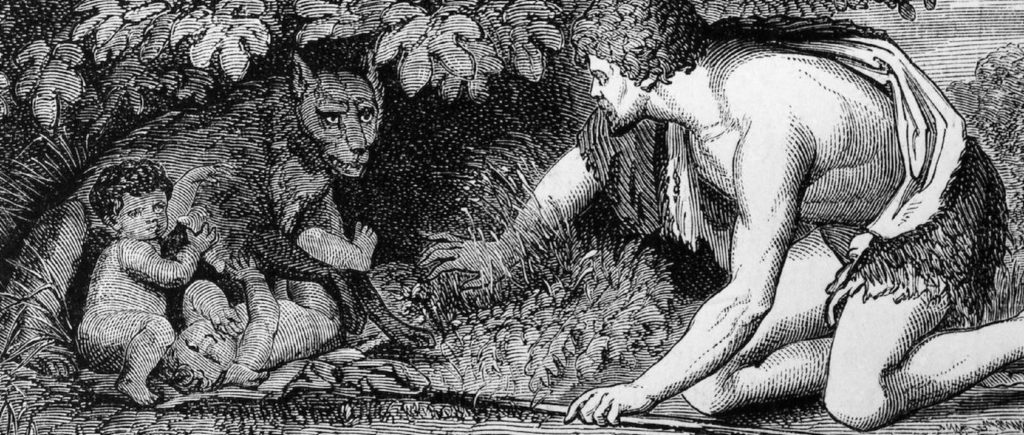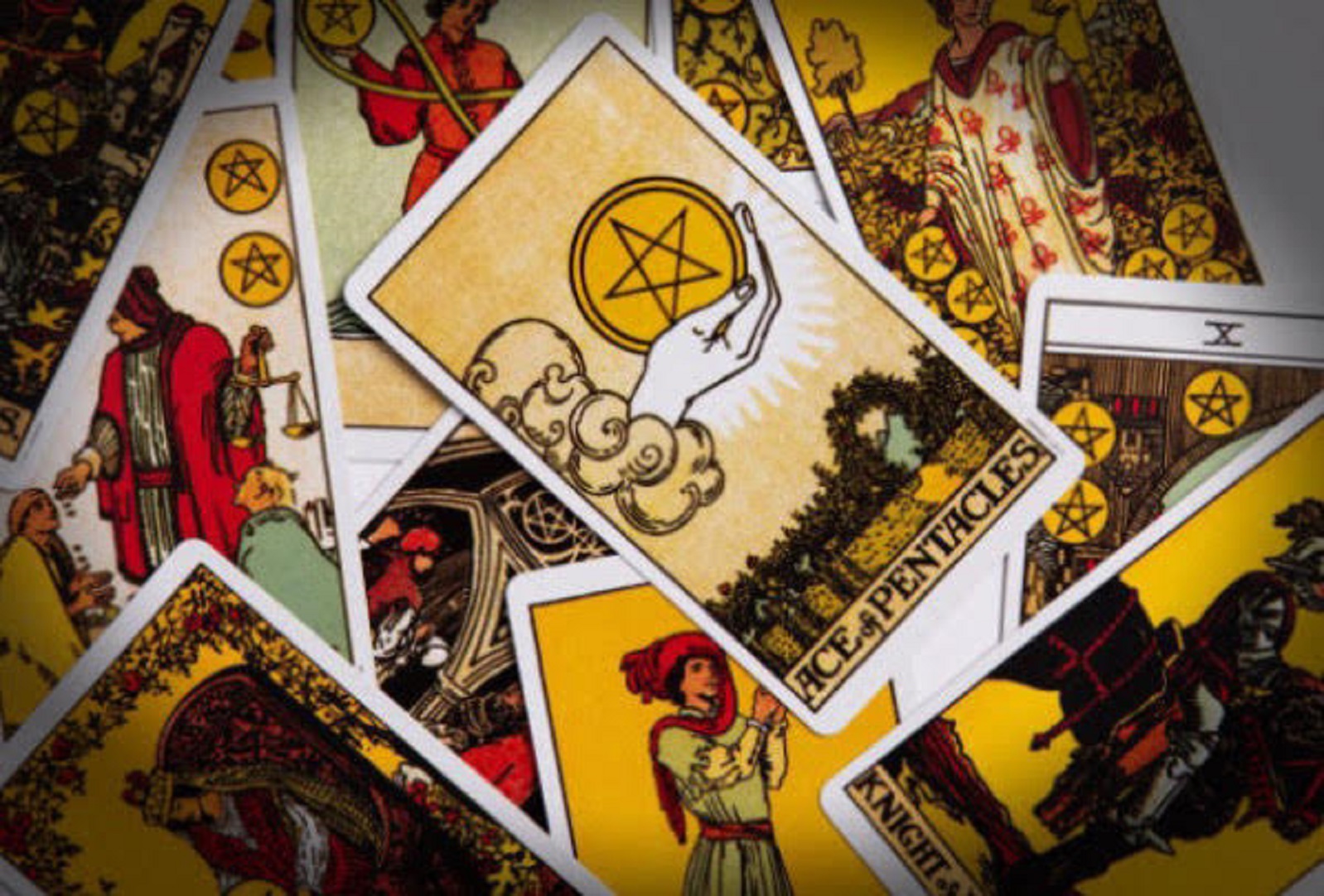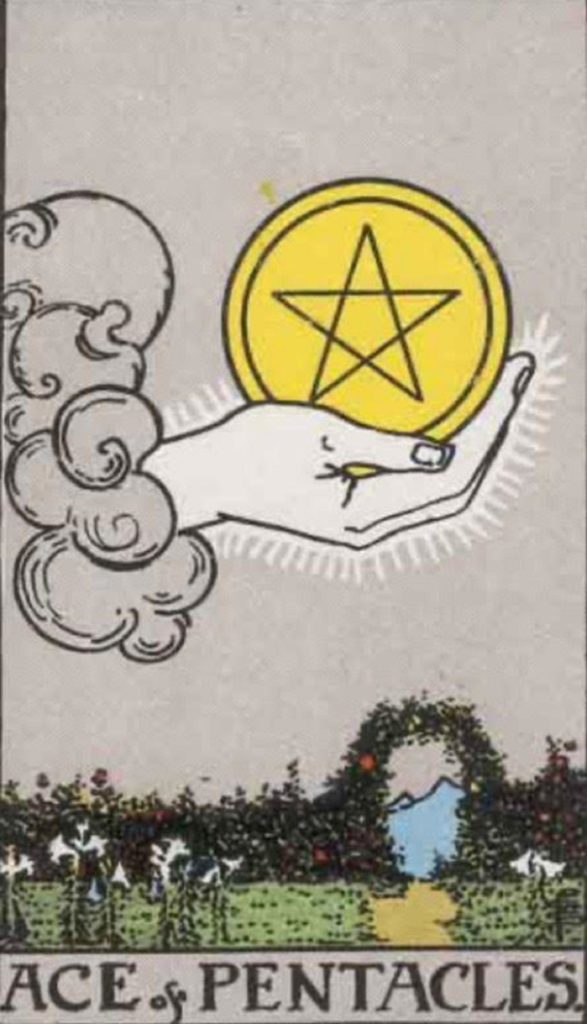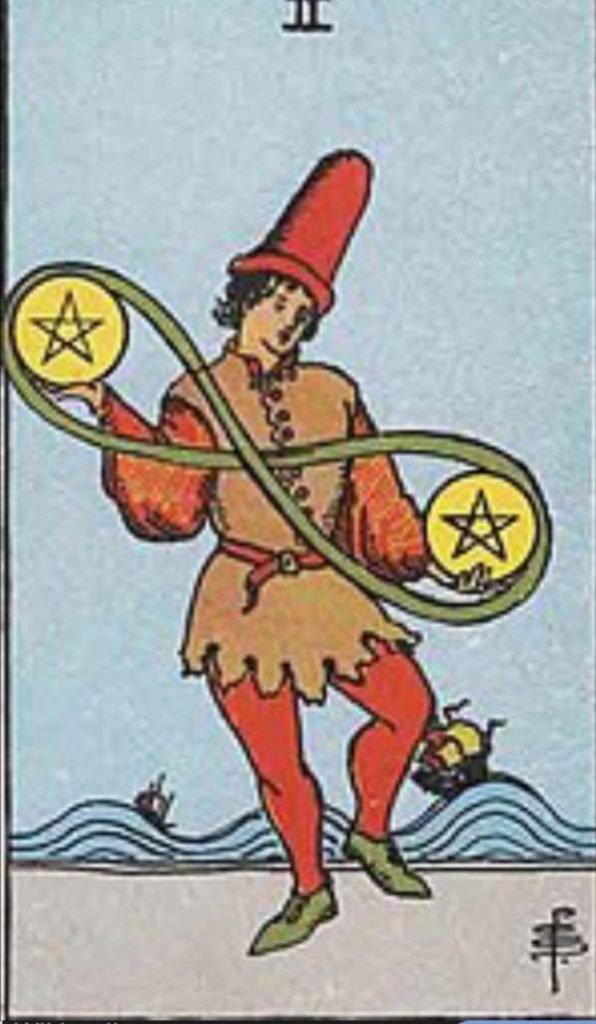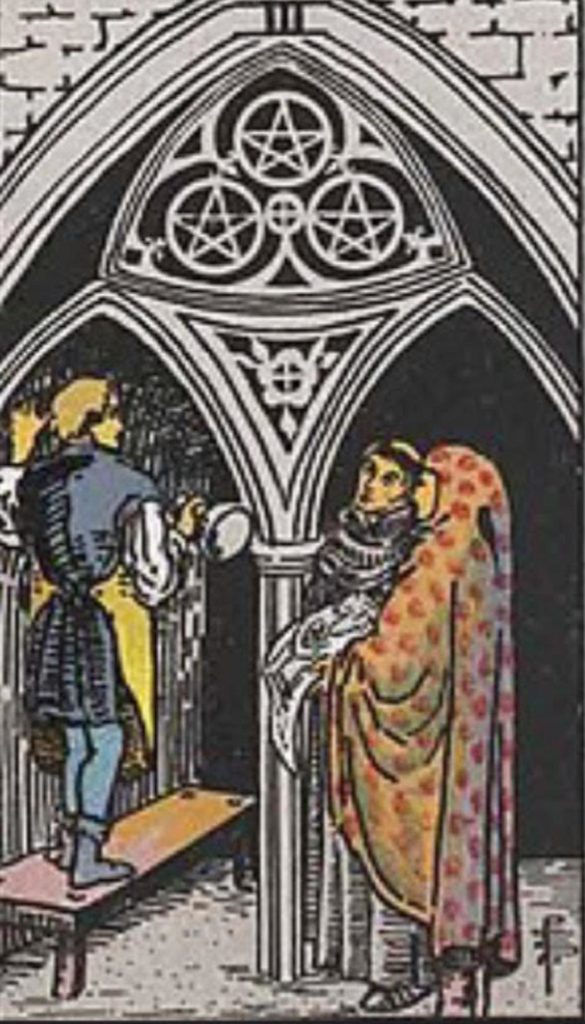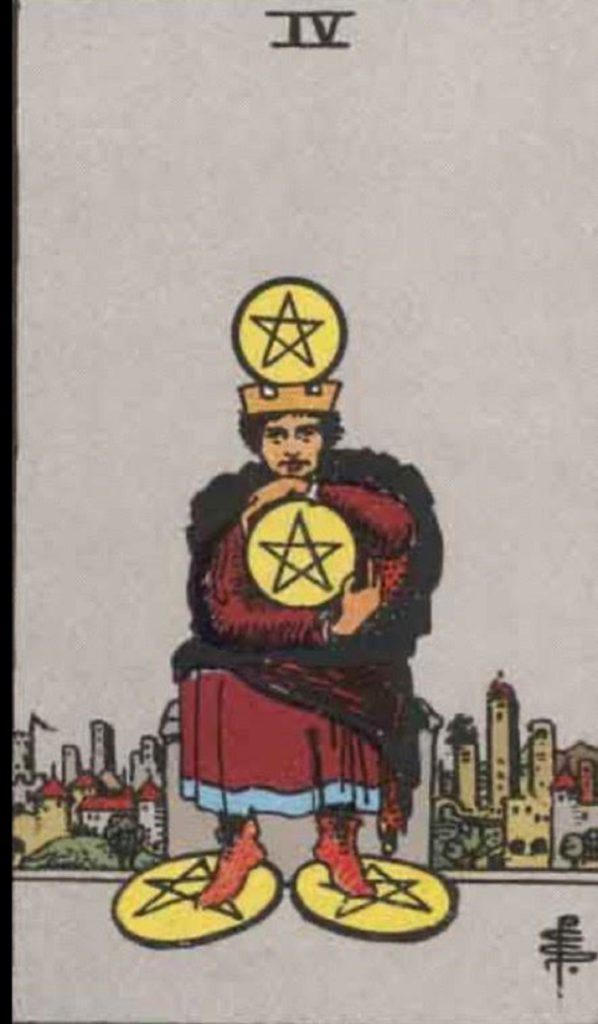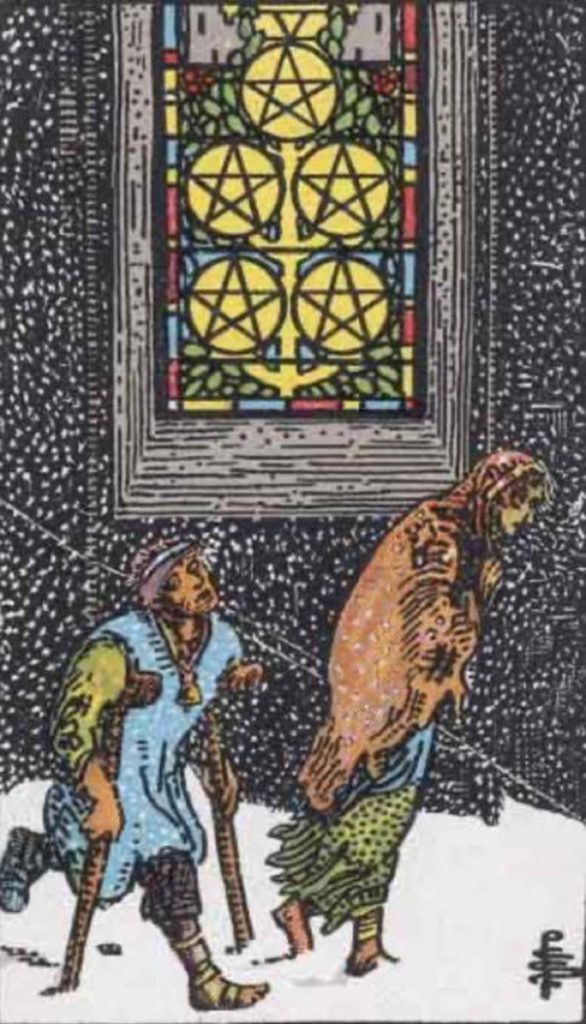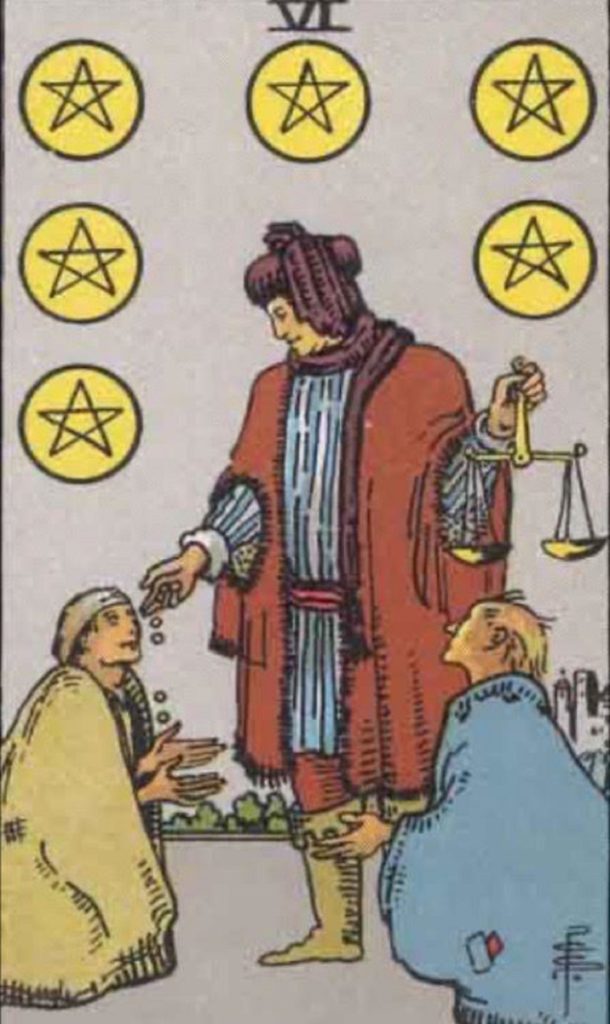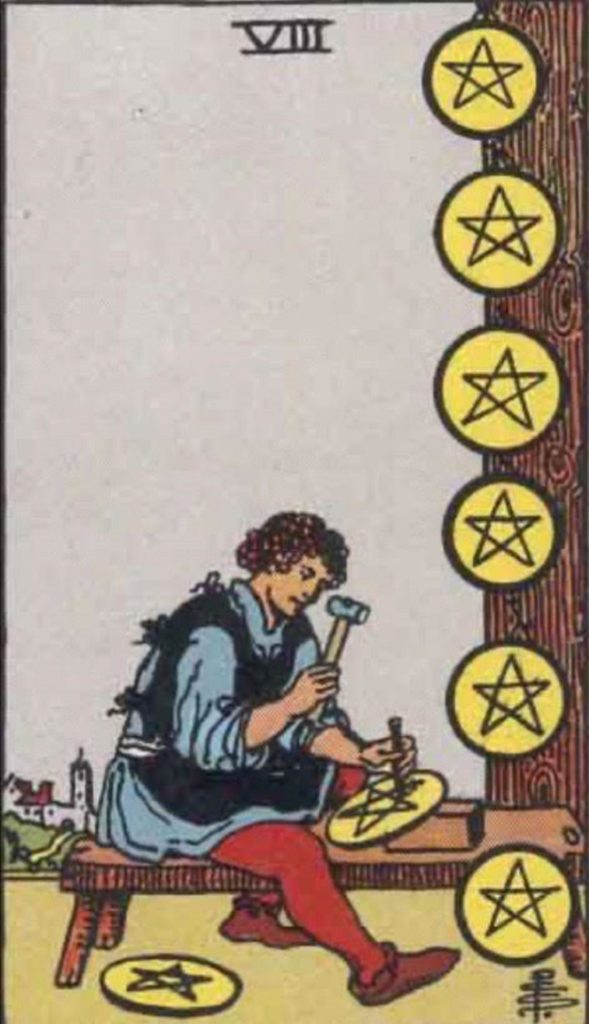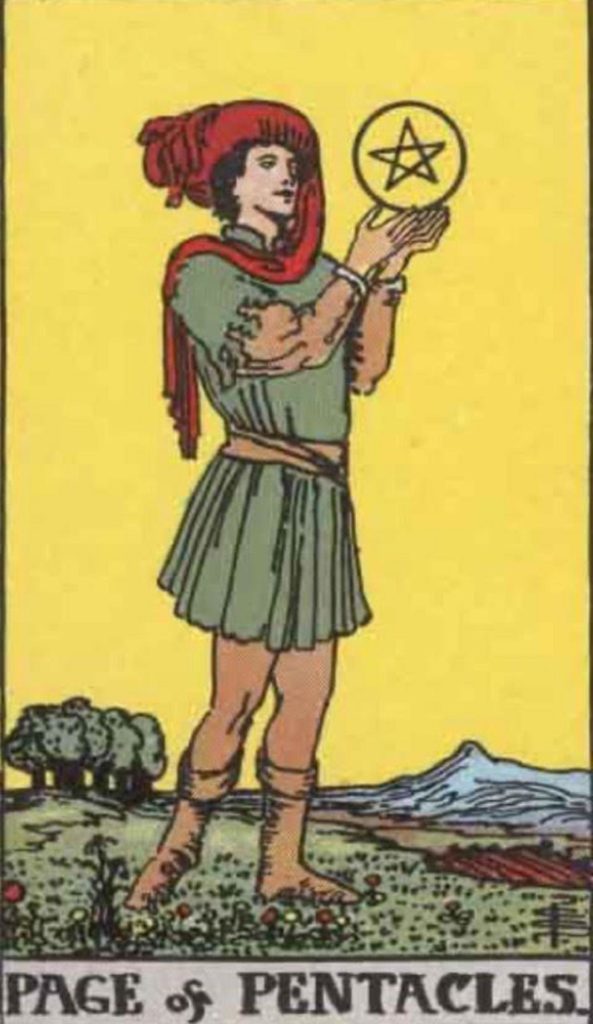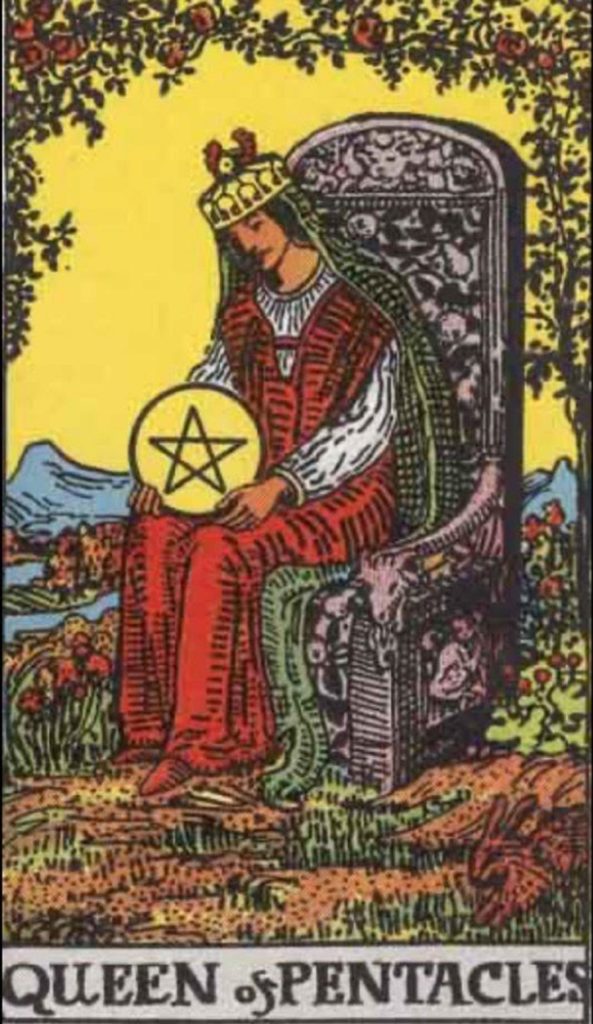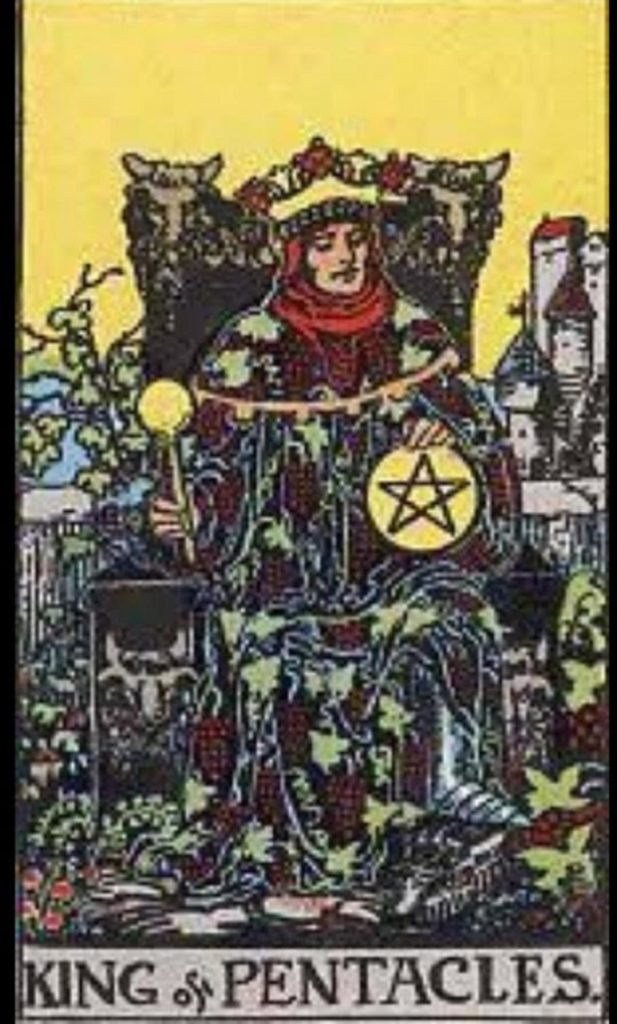
The Tarot Minor Arcana: Suit of Cups by W1tchsbrew
Be sure to check her Etsy shop Wood ov Wyrd
Introduction:
The Suit of Cups is associated with the element of water. Water is fluid, agile and ‘in flow’ but it’s also very powerful and formative. This tarot suit represents emotions, feelings, subconscious, intuition and psychic ability.

The Cups often represent one’s emotional condition as it relates to personal relationships, love, hate, and the interaction between one’s spiritual level of consciousness and the natural environment.
Metaphysical Correspondences:
Zodiac Signs: Cancer, Pisces, Scorpio
Get to Know the Minor Arcana Suit of Cups:

- Ace of Cups
Upright: When the Ace of Cups appears upright in a tarot reading, it represents an unfailing source of balm for body, heart and soul. It suggests that you can relax into a safety net of love, and support.
Reversed: The Ace of Cups reversed warns of a loss of self-esteem, optimism and faith in the abundance that the universe has to offer. Stop to examine what it is that is causing you to lose altitude. It might be the mental food you are feeding yourself.
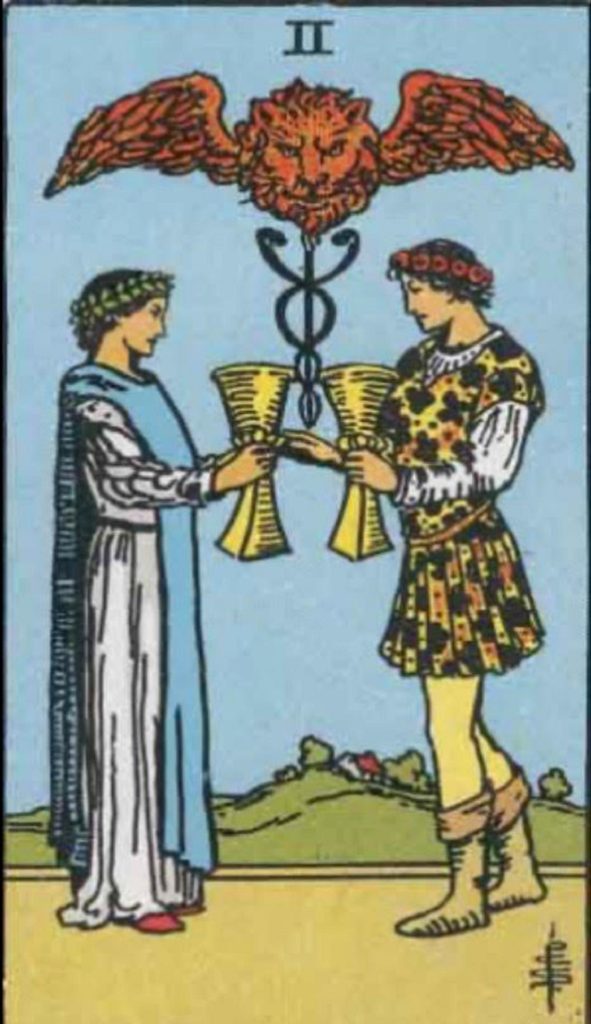
- Two of Cups
Upright: The Two in this suit signifies a union of souls. This card traditionally describes a romantic relationship, but also includes the idea that all good friendships and partnerships are based on a natural affinity and a deep mutual understanding. As a personal reflection, it can also signify that your mind and your soul are discovering each other, maybe for the first time.
Reversed: The Two of Cups reversed indicates that you may be investing too much in a relationship. Sometimes this is a signal that you must stop seeking so much validation from others.

- Three of Cups
Upright: When seen in a tarot reading, this card resonates with a spirit of agreement, mutual support, encouragement and teamwork. It points to all the benefits of harmonious relationship. This card reassures that it’s ok to ask for the help you may need.
Reversed: The Three of Cups reversed indicates that you may be frustrating the best efforts of those who love you most. Try to find a way to let in some of the love and caring that comes to you.
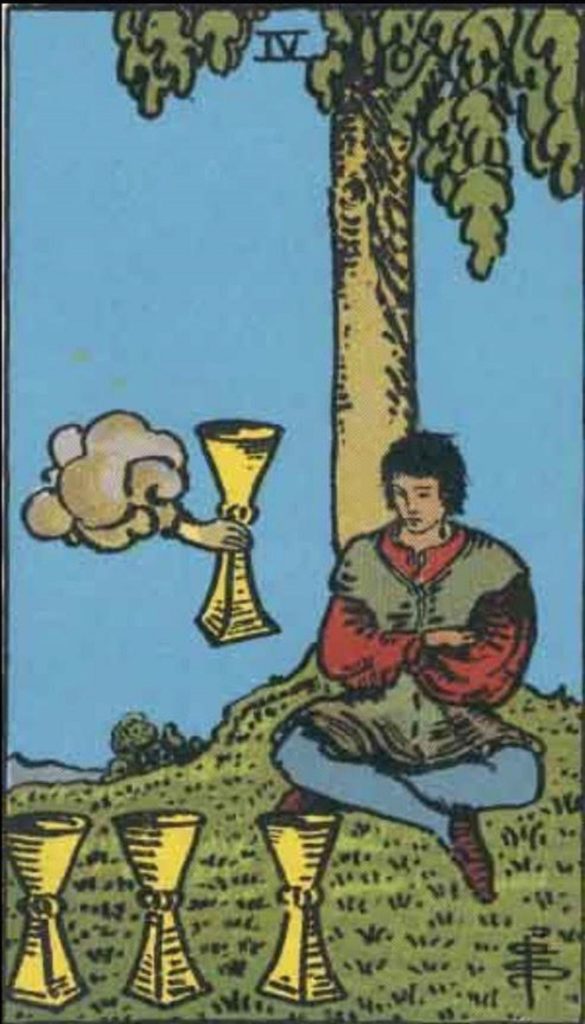
- Four of Cups
Upright: A Four in this suit suggest you may have become dissatisfied with life, and emotionally uncomfortable. You need to take a clear look at how stalled or distracted you have become. You may have been bogged down by negativity, hopelessness or a sense of limitation.
Reversed: The Four of Cups reversed indicates that some part of you is resisting the flow of events. Recognize this mood as a symptom of a deeper dissatisfaction and come clean to yourself about your real feelings. There is something to be learned.

- Five of Cups
Upright: When seen upright in a tarot reading, the Five of Cups traditionally portrays the mess that is left after an emotional upheaval, such as a tantrum or fit of rage. Consequences run the gamut from a hangover and lost wages, to abuse and ruined relationships. Take some time to reflect and recover.
Reversed: The Five of Cups reversed represents a paradoxical situation wherein what seems like the worst thing that could happen actually creates a better circumstance. You are freer to act authentically as a result of this energy turn.
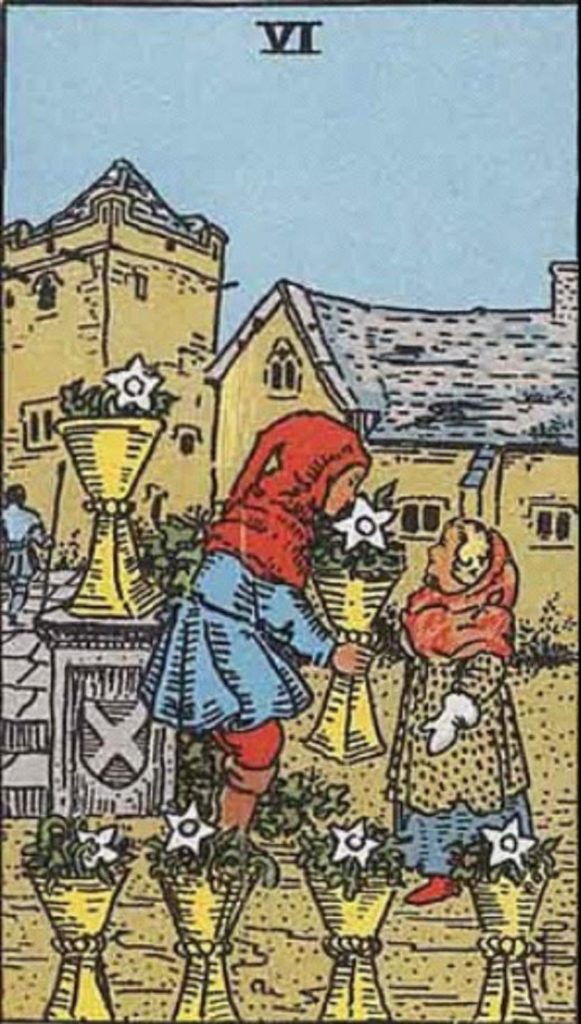
- Six of Cups
Upright: When this tarot card appears upright, it generally represents a refreshing openness and innocence and a willingness to learn. Remember that this same freshness, those new possibilities, are always available to you, even now.
Reversed: With the Six of Cups reversed, you can finally close accounts with the emotional undertow that has been part of your life. Try to revisit those wounded places calmly, without the fear that you will be drawn back in.
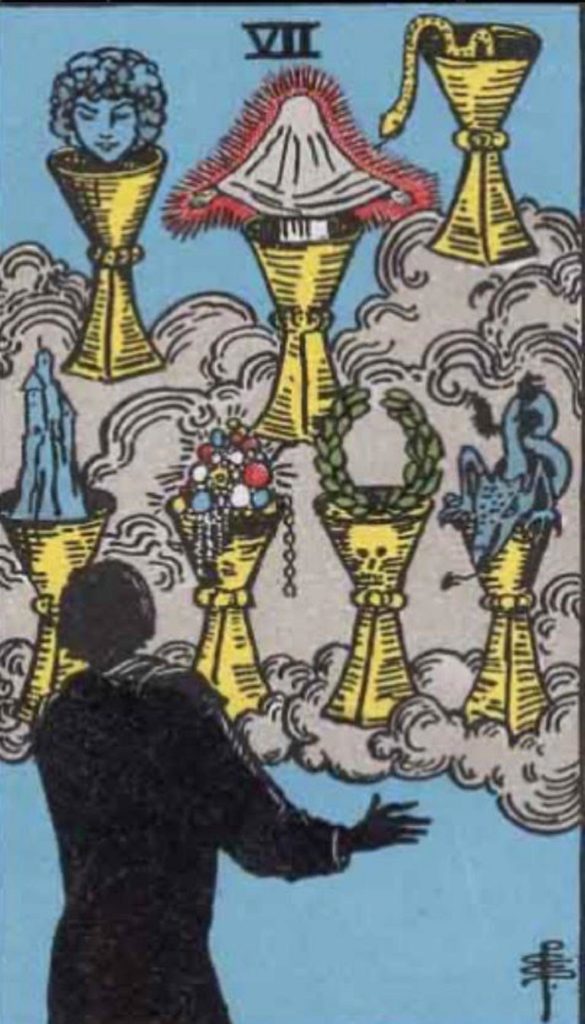
- Seven of Cups
Upright: The Seven of this suit typically refers to works of the imagination, the use of dream and vision to invent a future different than the life one is currently living. This card reminds you that your outcomes are not set in stone.
Reversed: The Seven of Cups reversed suggests that you to reawaken to playfulness, joy and curiosity. Perhaps a lack of purpose is having a deadening effect.

- Eight of Cups
Upright: This is a difficult card, but a realistic one, insofar as it warns against misplaced trust and unguarded vulnerability.
Reversed: The Eight of Cups reversed suggests that you may have experienced a terrible event, yet you have somehow not allowed it to ruin your life. Under the circumstances, you are doing just fine. Recognize how far you’ve come.

- Nine of Cups
Upright: The Nine of Cups in this position advises that you open yourself to circumstances around you. There may be no need to manage a situation that does not require a lot of control or leadership.
Reversed: The Nine of Cups reversed suggests that you are getting what you thought you wanted, but it’s not what you really want at all. This is an essential lesson in life. When you set a goal, specify how you want it to feel in your life, not just what you want to be, do or have.

- Ten of Cups
Upright: The Ten of this suit upright traditionally signifies family and community. It suggest that you should prioritize teamwork over your personal goals.
Reversed: The Ten of Cups reversed suggests that a group’s collective good will is damaged and its safety net is fraying. Things are being said and done that will be regretted later.

- Page of Cups
Upright: When this card presents itself in a reading, it may be that a sense of being grounded in reality has not yet entirely set in. Be unconcerned with the outcome. Later you will understand why you needed to be in this position.
Reversed: When the Page of Cups card is reversed it suggests that you may have been overly expressing some self-indulgent feelings. If you impinge upon the good nature of others too much, you may be unpleasantly surprised by the results.

- Knight of Cups
Upright: The Knight of Cups in this position advises that you jump into your new situation with both feet. Think no more about the route you had to travel to get back here. There is no need to be cavalier about what seems familiar.
Reversed: When reversed, the knight of cups continually looks for excuses or a way to blame his problems on someone else. It suggests you may need to reflect and take personal responsibility for the way things are in your life.

- Queen of Cups
Upright: The Queen of Cups upright encourages you to be generous, kind and forgiving. Support the ability of others to get what they want. However, you must not allow your willingness to give be misunderstood or abused, as if it were a weakness.
Reversed: When this card is reversed in a reading, it suggests that you stop all efforts to dull your pain or distract yourself from it. Looking the other way is not going to help you anymore. You must be emotionally honest with yourself in order to heal.
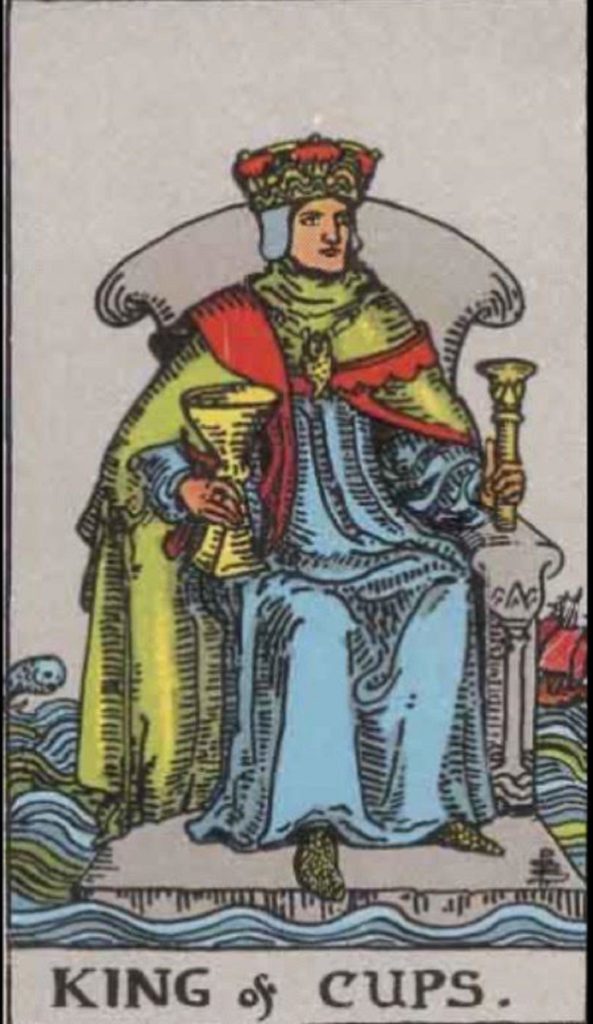
- King of Cups
Upright: When the King of Cups appears in this position, it advises that you closely examine your conscience and bring your personal mission into alignment with what is best for everyone.
Reversed: Reversed, this card suggests you may be bitterly holding a grudge or some hatred — withholding your natural propensity for forgiveness. This will create an emotional vacuum around you.
What It Takes:
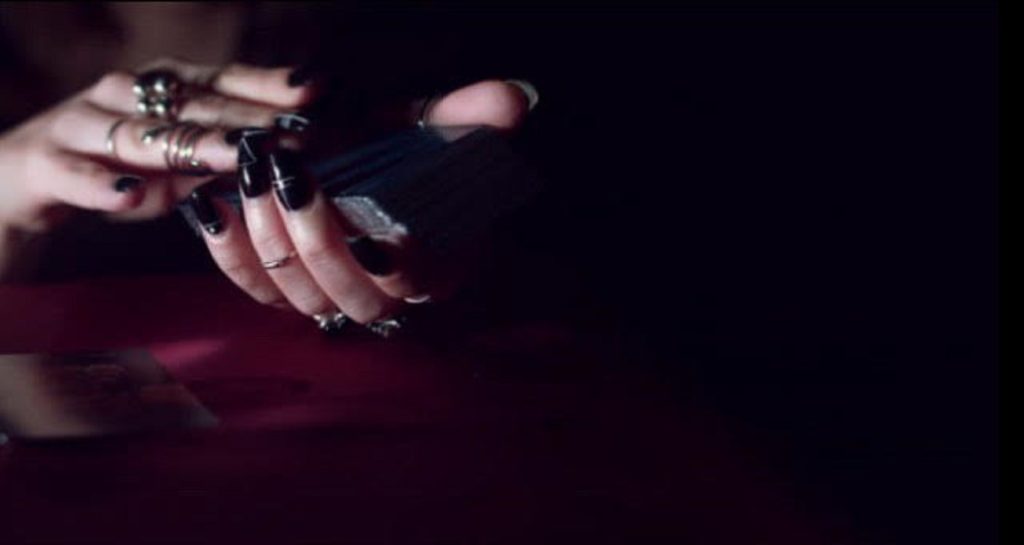
These are extremely brief descriptions of The Suit of Pentacle tarot cards. To fully utilize the art of tarot with confidence takes much time and extensive learning. It is strongly advised that you do further personal research and dive deeper into the complex meanings of each tarot card, prior to practicing this form of divination.
Further Resources:
Joan Bunning’s “Learning the Tarot—An Online Course” has helped hundreds of thousands of people worldwide discover the personal value of the tarot. Drawing on the material offered in this popular online course and from her previous books, Joan has created a complete guide to tarot for beginners, which serves as a handy and in-depth resource for more experienced tarot card readers as well.
While there are countless books devoted to tarot, what sets Joan Bunning’s book apart is her ability to take a rather complicated esoteric system and break it down into clear, manageable, and easy-to-learn lessons. These lessons cover the basics and then move gradually into more advanced concepts.
The Tarot Minor Arcana: Introduction and Suit of Pentacles
The Tarot Minor Arcana: Suit of Wands












